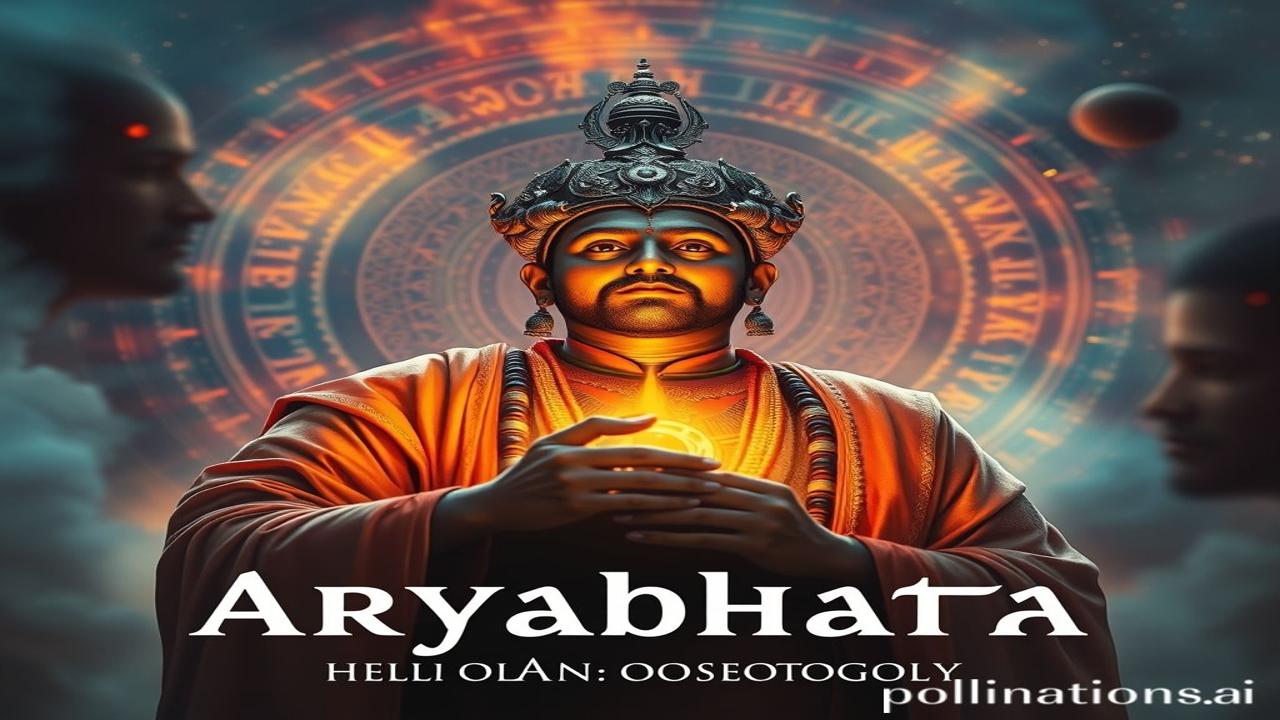Aryabhata: When India Gazed at the Stars & Changed the World – Hindi-English Blog
“Kabhi socha hai, raat ke andhere mein, hazaron saal pehle, kisi ne bina kisi telescope ke sitaron ko dekha hoga? Unki aankhon mein kya sapne honge, kya sawal honge?” The dust of time has settled, but the echoes of those ancient wonderers, especially Aryabhata, still resonate in the science that shapes our world today. Let’s delve into the life and legacy of this Indian astronomical genius.
Aryabhata: The Dawn of Indian Astronomy
Aryabhata wasn’t just a mathematician; he was a cosmic architect. Born in 476 CE, likely in Kusumpura (modern-day Patna), he was a pioneer whose ideas challenged prevailing notions and paved the way for modern astronomy. Think of him as the Indian Copernicus, but centuries earlier! He gifted the world with his magnum opus, the Aryabhatiya, a concise yet revolutionary treatise on mathematics and astronomy written in Sanskrit verse. This wasn’t some philosophical musing; it was a calculated dismantling of the accepted geocentric model of the universe.
The Groundbreaking Aryabhatiya
Aryabhatiya is divided into four sections:
- Gitikapada: Deals with astronomical constants, trigonometric functions, and the computation of time.
- Ganitapada: Covers arithmetic, algebra, trigonometry, and indeterminate equations.
- Kalakriyapada: Explains the division of time, lunar months, and the calculation of eclipses.
- Golapada: Describes the celestial sphere, including the Earth’s shape and its rotation.
Aryabhata wasn’t just crunching numbers; he was building a universe in his mind, and then sharing that blueprint with the world.
Living in the Age of Aryabhata: A Glimpse into Ancient India
Imagine living in a bustling city like Kusumpura during the Gupta Empire. Temples with intricate carvings reaching towards the heavens, the scent of incense and spices filling the air. Artisans meticulously crafting bronze statues of deities, farmers tending to their fields, and scholars like Aryabhata pouring over ancient texts, illuminated by the flickering light of oil lamps.
Ma Rukmini, the potter’s wife, would wake before dawn to prepare her clay. Her husband, a skilled craftsman, would then spend the day shaping it into beautiful pots and lamps, used by everyone from wealthy merchants to humble farmers. They believed in dharma and karma, and lived in a society where knowledge was revered and the pursuit of understanding the cosmos was considered a sacred duty. Aryabhata, in his modest dwelling, may have been seen as slightly eccentric, muttering about a spinning Earth while others believed it was stationary. But his dedication was undeniable.
Aryabhata’s Legacy: A Touchstone of Bharatiyata
Even today, Aryabhata’s influence is woven into the fabric of Indian culture. The first Indian satellite was named Aryabhata in his honor, a testament to his enduring impact. His mathematical concepts, including the place value system and the approximation of pi, are fundamental to modern science and technology. His understanding of the Earth’s rotation and the cause of eclipses challenges the prevailing myths of that time, demonstrating his belief in reason and observation.
The belief in Ganit (Mathematics) and Jyotish (Astronomy/Astrology) as interconnected disciplines continues to resonate in many Indian homes. While modern science has evolved, the foundational principles laid down by Aryabhata are still acknowledged and respected. This legacy reminds us of India’s rich intellectual heritage and its contribution to the world of science.
Fun Fact: Aryabhata Knew the Earth Rotated!
Log aksar samajhte hain ki Europeans ne pehle pata lagaya ki earth rotate karti hai. Lekin asli sach yeh hai: Aryabhata accurately described the Earth’s rotation on its axis centuries before Copernicus! He understood that the apparent motion of the stars was due to the Earth’s spin, a revolutionary concept at the time. He even gave a relatively accurate estimate of the Earth’s circumference.
Visualizing Aryabhata’s World
Imagine the cool night air, carrying the scent of jasmine from the nearby gardens. The soft glow of oil lamps illuminates the pages of the Aryabhatiya, the Sanskrit verses flowing like a cosmic river. The walls of his humble abode are adorned with astronomical charts and diagrams. The sounds of the city – the distant chants from the temple, the clanging of metal from the blacksmith’s forge, the gentle murmur of conversations – all fade into the background as Aryabhata gazes at the stars, unraveling the mysteries of the universe. You can almost feel the dedication and intensity radiating from him.
Final Thoughts
“Gyanam paramam dhyeyam” – Knowledge is the highest goal. Aryabhata’s life and work remind us that the pursuit of knowledge is a sacred endeavor, and that even in the face of prevailing beliefs, the truth will always shine through, illuminating the path forward. He wasn’t just an astronomer; he was a beacon of intellectual curiosity, reminding us to always question, to always seek, and to always reach for the stars.
